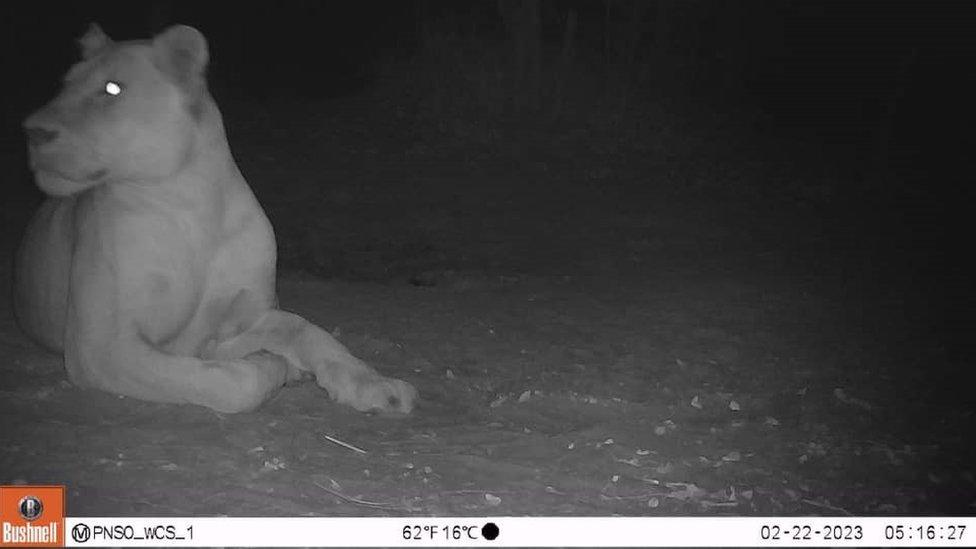Camera snaps first lion seen in national park in nearly 20 years
- Published
- comments

The lioness was snapped at a national park in Chad
A lioness has been spotted in a national park in Chad, north-central Africa, for the first time in nearly 20 years.
A team of conservationists from the government of Chad and the Wildlife Conservation Society (WCS) released a picture taken by a remote camera of the animal in the country's Sena Oura National Park.
The image shows a muscular female lion the team describes as "a beautiful lioness, in her prime and clearly in great health".
The recent spotting is a big deal because lions are considered extinct in Sena Oura, according to an International Union for Conservation of Nature( IUCN) assessment.
This lioness and cubs were photographed in Tanzania in eastern Africa
The national park where the photo was taken is part of the Bouba N'djida-Sena Oura region along the Cameroon/Chad border.
It's an area which saw lots of poaching more than a decade ago, but there have been improvements after the governments of both Cameroon and Chad moved to do more for wildlife conservation.
This has lead to better protection of the national parks and wildlife populations are now starting to recover.
1. The majority of lions live in Africa, but a small population does exist in India.
2. Lions live in groups called prides and they tend to hunt and eat together.
3. Lions are very powerful animals. Male lions can weigh up to 30 stone and lionesses can weigh around 20 stone.
4. Lions can live up to about 15 years on average.
5. A lion can reach up to 50 miles per hour in speed for short periods of time. That's around double the speed of Usain Bolt who is currently the fastest person in the world!
Where do lions live in Africa?
Lion populations have decreased massively over time due to habitat loss, hunting and loss of prey
Lions are currently classified as vulnerable overall on the IUCN's red list, but lion populations in West and Central Africa are particularly small and scattered.
They've declined an estimated 66% since the early 1990's, with factors like habitat loss, a decline in prey and hunting all affecting the population.
West and central African lions are genetically different from those which are part of the east and southern African populations, and their recovery is seen as especially important for the region's wildlife diversity.
- Published10 August 2022
- Published21 April 2023
- Published19 July 2022
